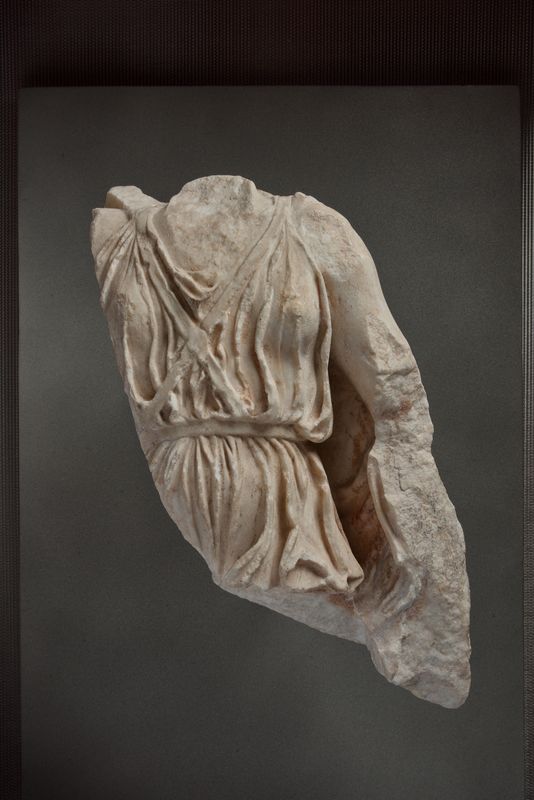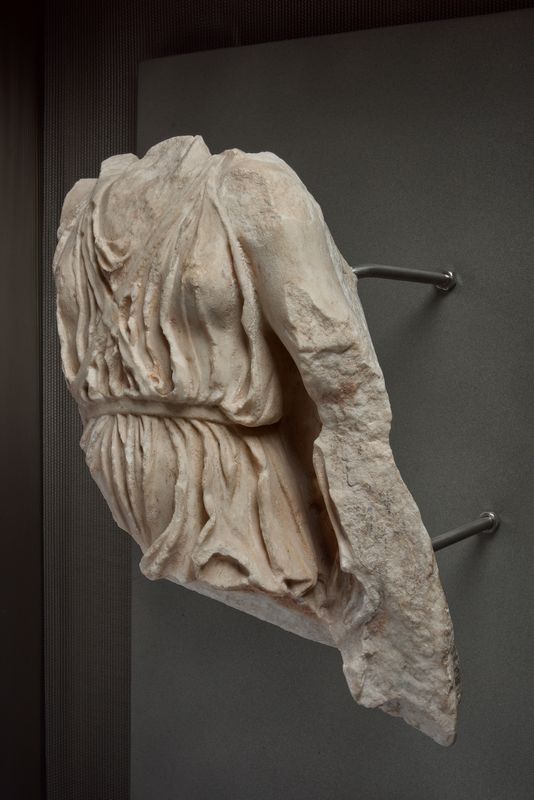Athena Nike Temple. Parapet. North slab V. Nike
Inventory number
Ακρ. 996
Artist
Agorakritos' workshop
Category
Architectural sculpture
Period
Classical Period
Date
Around 410 BC
Dimensions
Height: 0.47 m
Length: 0.29 m
Material
Marble from Penteli
Location
First Floor, West, Open case. Parapet of Athena Nike Temple







